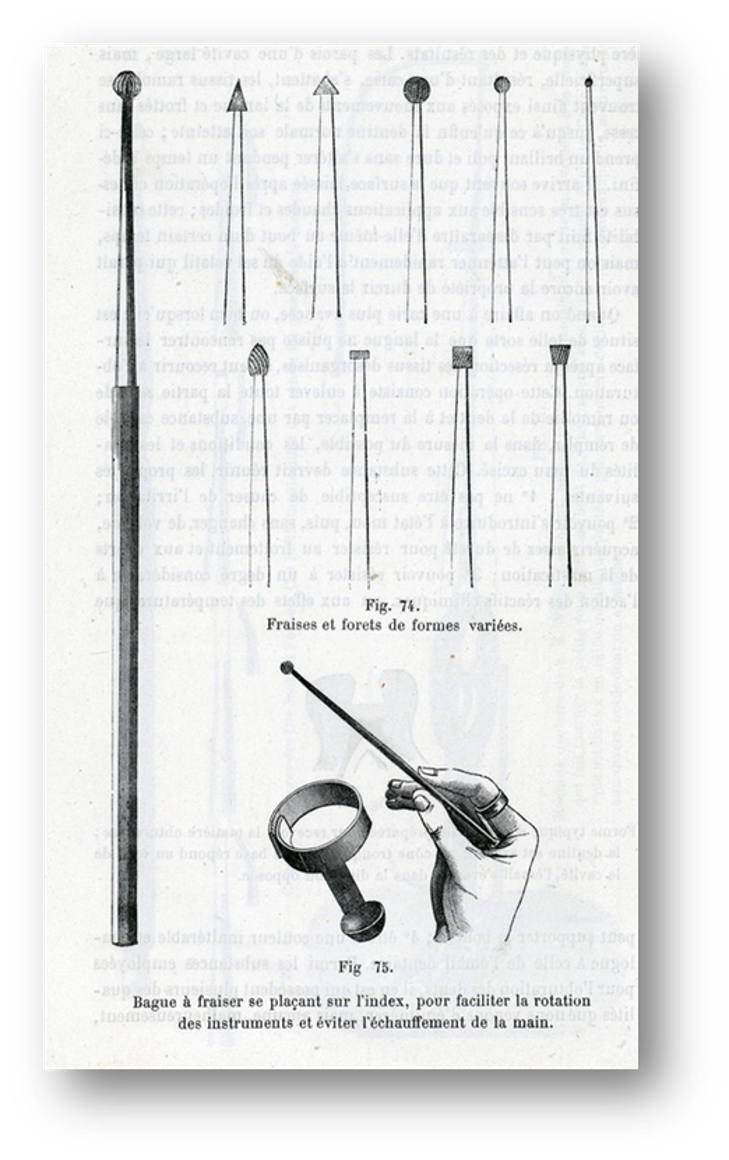Hand drills
Before air rotors, and before pedal-powered drills, all dentists had for cavity prep was the humble hand bur.
In the video. Gary Smith demonstrates hand burs techniques, using a selection of items from the ADAQ Museum of Dentistry collection.
These rod-shaped hand drills were first described by Pierre Lefoulon in his New theoretical and practical treatise on the art of the dentist, 1841. He called them 'strawberries' because of the bur head's shape. These burs were designed to be rotated with the fingers and would have been in use around 1860. The non-working end of the bur was held in a cup or thimble device, which was held in the palm of the hand. With a thimble device some force could be directed down the long axis of the bur while the fingers continued the rotation. Hand burs were followed by crank and gear devices operated by hand, until electrical drills were devised.
SS White catalogues showed these burs for sale as late as 1876. They were available with steel, ivory, pearl or cameo handles to order.
(Images & catalogue source: Archive.org. CC).
